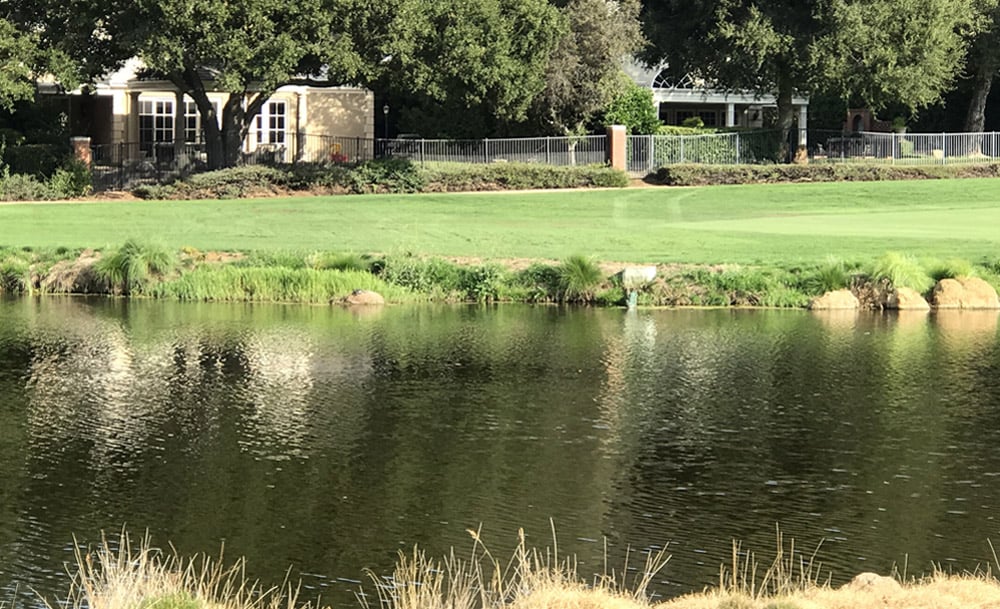Agromin was recently asked by Sherwood Country Club members to address localized bare and wet spots throughout the golf course. The Sherwood course, located in Lake Sherwood near Thousand Oaks, is among the top private courses in California, and hosts the PGA tour. Quality turf is a critical requirement for this premiere course.

Our solution is to apply a proprietary blend of compost and biochar. The impacted area is double aerated using four-inch deep tines. The blend is broadcast using a compost spreader and drug into the soil. Subsequently, the soil will be leached pushing the salts below the root zone.
Biochar will be filled into the aeration holes, which creates porosity in the soil. Compost further enhances soil porosity, also known as soil “structure.” The amendment in the plugs will provide a place for the salts to go below the root zone. The compost in the blend will bring soil organic levels from below one to over three percent, the concentration known to maximize soil health and plant performance. The biochar will stabilize the compost for the long term so it does not degrade.
Both the biochar and the compost can hold a significant amount of water, so they will “soak up” water in the low areas. Because the material is applied through the soil profile–from surface through to below the root zone–it will provide a path for water evaporation. Within a few months, the dry spots should be gone, and grass will have grown where there was none before.

